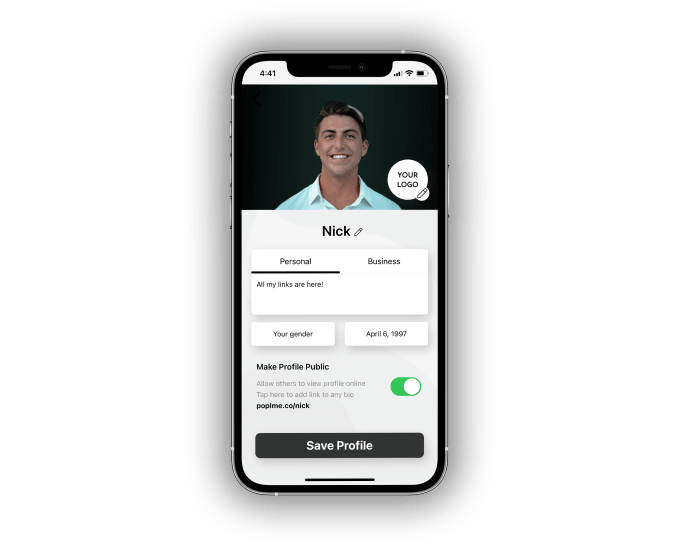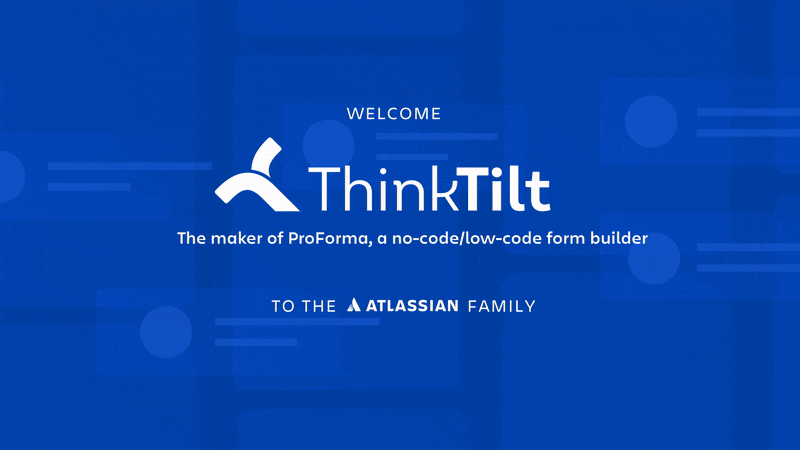The Station is a weekly newsletter dedicated to all things transportation. Sign up here — just click The Station — to receive it every weekend in your inbox.
Hi there, new and returning readers. This is The Station, a weekly newsletter dedicated to all the ways people and packages move (today and in the future) from Point A to Point B.
Just as I was getting ready to ship this newsletter, I spotted that there was a fatal crash involving a Tesla, in which no one was in the driver’s seat. There was an individual in the passenger seat and one in the rear. Both men died. Follow @KPRC2Deven, the Houston reporter who broke this story over the weekend, to keep up with the latest. Once again, Tesla vehicles are not self driving.
One more thing: I will not have a newsletter next week. Don’t be sad! We’ll be back the following week.
My email inbox is always open. Email me at kirsten.korosec@techcrunch.com to share thoughts, criticisms, offer up opinions or tips. You can also send a direct message to me at Twitter — @kirstenkorosec.
Micromobbin’

Welp. I was only partially right about the e-scooter pilot in New York City. On Wednesday, Lime (as I predicted), Bird and Veo were officially chosen to kick off the city’s first foray into the world of shared electric scooters. Equity, accessibility and proven capabilities of keeping those pesky vehicles off of sidewalks were top priorities for the NYC Department of Transportation. Each company will be releasing 1,000 e-scooters into parts of the east Bronx, with more to come in the second phase expanding further into the borough.
The process of gaining this small sliver of the Big Apple has been very competitive. City concessions are a hot commodity, and winning New York is perceived to be, in technical terms, a big deal. The operators that hit the mean streets of New York have the potential to survive as the rideshare industry continues to consolidate under two-wheeled micromobility giants. But there is something a little bit anticlimactic about the news. Not to knock the Bronx, but dockless e-scooters are needed and could be of use citywide. One has to wonder how much influence Lyft-owned Citi Bike has over where e-scooter companies get to operate.
The 2018 legislation that allowed for the e-scooter pilot in the first place very clearly stipulates that pilot zones would be prioritized based, in large part, on areas of the city that don’t have access to docked bike shares, which basically means areas that don’t have access to Citi Bike. And the pilot zone in the Bronx doesn’t extend into areas in the South Bronx where Citi Bike plans to expand. I guess we’ll see how it goes after the first year.
Let’s talk about Europe
Electric bikes and scooters are barely legal in Ireland, but Tier is already preparing for more regulation. The Berlin-based e-scooter company has partnered with the Irish micromobility tech platform Luna, the Insight SFO Centre for Data Analytics, and Smart DCU to create a new AI-powered e-scooter trial that’ll launch on Dublin City University campuses as soon as the ink on the bill legalizing e-scooters dries.
The fleet of 30 computer vision-enabled scooters will allow Insight researchers to analyze a new, ever-growing dataset. Luna’s tech will allow the scooters to roll out with pedestrian and lane identification, making them as safe as the Irish government could possibly hope for.
Meanwhile in France, the government is moving closer to being the first country in the world to offer people the chance to trade in clunkers for an electric or folding bicycle. Owners that scrap their yucky old ICE cars can get a €2,500 rebate to buy a bike with the money. The National Assembly just approved the measure in a preliminary vote.
— Rebecca Bellan
Deal of the week

Ok, I know we had Grab as deal of the week in the last edition of The Station, but now we have a finalized deal and it’s a lot bigger than expected.
Ride-hailing, delivery and super app” company Grab finally and officially announced plans to go public. Grab, which operates in Singapore, Malaysia, Cambodia, Indonesia, Myanmar, Philippines, Thailand and Vietnam, merged with special purpose acquisition company Altimeter Growth Corp. The merger would value Grab at $39.6 billion and the company would keep $4.5 billion in cash. Importantly, Altimeter agreed to a three-year lockup period for its sponsor shares.
Grab has aspirations for the capital that the public markets provide. The company thinks there’s still a lot of room to grow when it comes to food delivery and on-demand mobility in Southeast Asia. It expects to see the total addressable market jump from $52 billion to $180 billion by 2025.
As part of the announcement, Grab shared some metrics and some big numbers. In 2020, the company managed to generate around $12.5 billion in gross merchandise value, TechCrunch’s Romain Dillet reported.
Other deals that got my attention …
Battery Resourcers, a startup that has a “closed loop” process to turn recycled battery material into nickel-manganese-cobalt cathodes to sell back to battery manufacturers, raised in a $20 million Series B equity round led by Orbia Ventures, with injections from At One Ventures, TDK Ventures, TRUMPF Venture, Doral Energy-Tech Ventures and InMotion Ventures. Battery Resourcers CEO Mike O’Kronley declined to disclose the company’s new valuation.
Cruise, the autonomous vehicle company aiming to deploy robotaxis in San Francisco and Dubai, added Walmart as an investor in an extended fundraising round that has grown to $2.75 billion. The company said it has a post-money valuation of more than $30 billion. Walmart and several unnamed institutional investors added capital to a $2 billion equity round announced back in January that was led by Microsoft.
Clearcover, the digital car insurance startup, raised $200 million as part of a late-stage financing round led by Eldridge, the investment firm helmed by Los Angeles Dodgers owner Todd Boehly, Reuters reported.
Dat Bike, a Vietnamese startup with ambitions to become the top electric motorbike company in Southeast Asia, raised $2.6 million in pre-Series A funding led by Jungle Ventures. Dat Bike’s selling point is its ability to compete with gas motorbikes in terms of pricing and performance. Its new funding is the first time Jungle Ventures has invested in the mobility sector, and included participation from Wavemaker Partners, Hustle Fund and iSeed Ventures.
Oxbotica, a U.K. startup that develops autonomous driving systems took on online grocer Ocado as a new investor. Ocado, which took a $13.8 million stake in the AV startup, is treating this as a strategic investment to develop AI-powered, self-driving systems that will work across its operations, from vehicles within and around its packing warehouses through to the last-mile vehicles that deliver grocery orders to people’s homes, TechCrunch’s Ingrid Lunden reported.
Polestar, Volvo Car Group’s standalone electric performance brand, has raised $550 million in its first external round led by Chongqing Chengxing Equity Investment Fund Partnership, Zibo Financial Holding and Zibo Hightech Industrial Investment. SK Inc., the South Korean global conglomerate, and a range of other investors also participated.
TuSimple debuted on the public market this week. The company raised a bit more than $1 billion in its IPO, selling shares at $40. I interviewed the CEO Cheng Lu, so keep an eye out for that article in the next few days.
Xwing scored another win two months after it completed its first gate-to-gate autonomous demonstration flight of a commercial cargo aircraft. The company announced it raised $40 million at a post-money valuation of $400 million.
Scale AI’s Alexandr Wang

Alexandr Wang, co-founder and chief executive officer of Scale AI. Photographer: David Paul Morris/Bloomberg via Getty Images
Scale AI, the data labeling startup that essentially sells the picks and shovels needed to develop and apply artificial intelligence, closed a $155 million round back in December. Just after that round closed, more investors came calling co-founder and CEO Alexandr Wang told me in a recent interview.
The upshot? A $325 million Series E funding round co-led by Dragoneer, Greenoaks Capital and Tiger Global at a valuation of more than $7 billion — double what it was four months ago. Additional new investors Wellington Management and Durable Capital joined existing investors Coatue, Index, Founders Fund and YC. Jeff Wilke, former CEO of Amazon’s Worldwide Consumer business, will be joining as advisor to Wang.
“Investors, I think are really ready to go all in on AI and you’re seeing that just across the board in terms of investments,” Wang said. “A lot of that is because, I think AI as an industry is really going from something that’s been more research based and theoretical to one that’s really rooted in impact and real business results.”
Wang said the company, which got its start serving the autonomous vehicle industry, is seeing an increase in demand for its product from a broad swath of industries, including the government. Its customers now include fintech companies like Brex, PayPal and Square, e-commerce businesses Etsy, Instacart and Pinterest, transportation and logistics companies Flexport, GM, Luminar, Oshkosh as well government agencies such as the Department of Defense and U.S. Air Force.
Wang said they’ve also noticed this “incredible pickup” from its customers to view Scale AI as a full stack infrastructure provider and a full stack AI partner, rather than just a data lake provider. “That’s been another big evolution that is that a lot of our investors are really excited about.
And finally, I asked Wang if we should expect an IPO or another fundraising round soon. He didn’t quite answer my question. But here’s what he did say:
“I think our goal is to build a super sustainable business where we don’t need to keep raising outside capital and so our intent is certainly not to not to have to keep raising money to operate the business, and in fact I think historically we’ve always operated really efficiently,” Wang said. “I think the idea is that we as a business, we don’t really need to keep raising outside capital, beyond this.”
Policy corner

Hey there! TechCrunch reporter Aria Alamalhodaei loves some good wonky policy. And so periodically — like today! — she will bring us transportation-related policy updates.
EV manufacturers have been waging legislative battles in multiple states over the ability to sell directly to customers, rather than at established franchise dealerships. It’s a privilege that’s been held to this point only by Tesla, and even then only in select states. (TechCrunch covered the issue a few weeks ago.) But there are signs that the fight may be turning into something larger.
A senior representative from one of the country’s largest automaker lobbying groups, Alliance for Automaker Innovation — which has until this point been fighting EV makers’ push to direct sell, in step with dealership groups — made a major pivot from this stance. Alliance’s Wayne Weikel told Vermont lawmakers during a hearing of one of the state’s legislative committees that it is Alliance’s position in Vermont that the state should consider allowing automakers to sell directly to customers — all automakers.
This is a major break from the group’s established position, which is defending dealers’ monopoly on selling cars in every other state where direct sales legislation is being considered. It’s unclear why the group has broken ranks in Vermont only, or if they’ll be doing so in any other state.
This doesn’t necessarily mean that things will be changing anytime soon, and certainly not in all fifty states. The direct sales bills in Washington and Georgia were both killed this legislative session, for example. A source close to the issue noted to TechCrunch that Washington’s Rep. Amy Walen (D), the Vice Chair of the House Consumer Protection and Business Committee (which heard the bill), is herself an auto dealer — the owner of Hyundai of Kirkland. The same is true of a legislator in Idaho, Rep. Jim Addis, who is part of a committee hearing the direct sales bill in that state.
— Aria Alamalhodaei
Oh and one more thing, from TechCrunch’s Rebecca Bellan …
Remember the bill that California state Senator Dave Min introduced last month that would require all AVs in the state to be zero-emission by 2025? Well, the bill has cleared the California Senate Transportation Committee. The language has been reworked a bit.
Now the bill would require all light-duty autonomous vehicles to be zero emission by 2027. The previous language hadn’t stipulated a type of self-driving vehicle, which could have had massive consequences on industries planning on heavy-duty AVs like autonomous trucking. While the bill still has a ways to go before it’s on Governor Newsom’s desk, it’s in line with the state’s goals to reduce emissions.
Notable reads and other tidbits

Let’s get to it.
Autonomous vehicles
Argo AI will be releasing its Voluntary Safety Self-Assessment — the official jargon in government speak for what can be described as its safety report — on Monday. But here at The Station, you can see it first. I haven’t done a super close read yet, but check out page 30 for the description on perception and a few pages later, how their self-driving system handles ambiguous situations.
Cruise announced it struck a deal to launch a robotaxi service in Dubai in 2023. This announcement felt like a distraction and has me wondering when Cruise is going to make — and show — technical progress with its autonomous vehicle deployment efforts in San Francisco, the market it has been aiming for all these years. Cruise said the robotaxi service in Dubai will use the Cruise Origin, the all-electric shuttle-like vehicle that has no steering wheel or pedals and is designed to travel at highway speeds.
Intel subsidiary Mobileye struck a deal with Udelv to supply its self-driving system to thousands of purpose-built autonomous delivery vehicles. The companies said they plan to put more than 35,000 autonomous vehicles, dubbed Transporters, on city streets by 2028. Commercial operations are slated to begin in 2023. It’s worth noting that Udelv was once developing its own self-driving system, but has now ditched that in favor of Mobileye’s SDS.
Nuro, the autonomous delivery vehicle company, will soon be delivering Domino’s pizza in parts of Houston. (Please welcome your new pizza overlords.) On certain days and times, customers who prepay online can choose to have the bot R2 drop their pizzas off. They’ll receive a text when the robot is outside and will be given an access code to open the bot’s chamber and release hot cheesy goodness into their hands.
WeRide, the Chinese autonomous vehicle startup that recently raised $310 million, received a permit to test driverless vehicles (meaning without a human safety driver behind the wheel) on public roads in San Jose, California. WeRide is the seventh company, following AutoX, Baidu, Cruise, Nuro Waymo and Zoox, to receive a driverless testing permit. The permit only allows for two driverless vehicles.
Electric vehicles
GM and LG Chem announced plans to build a second U.S. battery cell factory — a $2.3 billion facility in Spring Hill, Tennessee that will supply the automaker with the cells needed for the 30 electric vehicle models it plans to launch by mid decade.
QuantumScape, the solid state battery company, filed a document with the SEC that caught my attention. Celina Mikolajczak has joined its board. Why does that matter? Mikolajczak is the Vice President of Engineering and Battery Technology at Panasonic Energy of North America and prior to that was senior manager, cell quality and materials engineering at Tesla.
Rivian, the Amazon-backed EV manufacturer aiming to bring an electric pickup to market later this year, has partnered with Samsung SDI as its battery cell supplier. The two companies did not disclose the value of the deal or its term length, but in a statement Rivian said it had been working with Samsung SDI “throughout the vehicle development process.”
Tesla’s lawsuit against Dr. Guangzhi Cao is over. For the unfamiliar, Tesla had accused Cao, a former employee, of stealing source code from its Autopilot advanced driver assistance system and sharing it with XMotors, the U.S. unit of Chinese EV maker Xpeng, where he had taken a new job. A U.S. district court filing dated April 15 said the matter had been settled. Cao no longer works at XMotors.
Here’s the statement from XMotors, which was never made a party to the lawsuit.
After over two years of extensive discovery, including against XMotors, Tesla has failed to find any substantive evidence that supports its allegations and innuendos against XMotors. Tesla has failed to show any credible evidence that XMotors ever possessed, let alone used, any Tesla information from Dr. Cao.
Tesla has finally dismissed its claims and stopped its search for evidence that does not exist.
Technology innovation is at core of our foundation and strategy. In our pursuit of popularizing smart EVs, we respect any competition; however, we will not tolerate any bullying behavior or attempt to disrupt competitors. XMotors fully respects intellectual property rights, and bases its own competitive edge on its in-house-developed proprietary R&D and intellectual property.
TezLab, a free app that’s like a Fitbit for a Tesla vehicle, pushed out a new feature this week that shows the energy mix — breaking down the exact types and percentages of fossil fuels and renewable energy — coming from charging locations, including Superchargers and third-party networks throughout the United States.
Evtols
NFT Inc., a relatively unknown drive-and-fly vehicle startup, is betting it will succeed where its rivals have failed, with preorders opening for ASKA, its first electric flying car. The SUV-sized ASKA ( which means “flying bird” in Japanese) may be better described as a plane that drives, rather than a car that flies. Even when its six rotors are folded closed, the vehicle has the unmistakable look of a flying craft, with a helicopter-esque bubble front window and a distinct tail that would be familiar to anyone who has flown on an airplane. Important note: ASKA isn’t anticipated to be delivered until 2026.
In-car tech
Apex.AI, a startup founded by Bosch veterans and automated systems engineers Jan Becker and Dejan Pangercic, has spent four years rewriting the robot operating system that will give automakers the tools to integrate software within the vehicle and make sure all the applications run reliably. Now, freshly armed with a safety certification that validates its software development kit (SDK) is sophisticated enough to be used in production vehicles, Apex.AI has landed Toyota and Japanese tech startup Tier IV as partners.
Taiwan Semiconductor Manufacturing Company executives warned that the global semiconductor shortage, which has produced production slowdowns at Ford and General Motors, may drag on into 2022. TSMC CEO C.C. Wei pointed to the aftershocks of the COVID-19 pandemic as well as “geopolitical tensions” as reasons for the prolonged shortage in an investor call. TSMC, one of the world’s largest chip manufacturers, supplies chips for a wide range of products including smartphones, high-performing computers, and Internet of Things. Automotive sales accounted for 4% of their first-quarter revenue, which may not seem like much — but that’s a 31% increase quarter-over-quarter. (Aria Alamaldohaei)
Ford will debut its new hands-free driving feature (nope this doesn’t belong in the AV section) on the 2021 F-150 pickup truck and certain 2021 Mustang Mach-E models through a software update later this year. The automaker is aiming to compete with similar systems from Tesla and GM.
That hands-free capability uses cameras, radar sensors and software to provide a combination of adaptive cruise control, lane centering and speed-sign recognition. The system also has an in-cabin camera that monitors eye gaze and head position to help ensure the driver’s eyes remain on the road.
Mercedes-Benz lifted the final veil on its flagship EQS sedan after weeks of teasers, announcements and even a pre-production drive in which TechCrunch participated. (The company also released a 62-page press release alongside the reveal). There is a ton of the tech crammed into this vehicle from the microsleep warning system and 56-inch hyperscreen to the monster HEPA air filter and the software that intuitively learns the driver’s wants and needs. Oh, and 350 sensors used to record distances, speeds and accelerations, lighting conditions, precipitation and temperatures, the occupancy of seats as well as the driver’s blink of an eye or the passengers’ speech.
Ride-hailing
Uber appears to have lost another legal battle in Europe. Labor activists challenging Uber over what they allege are ‘robo-firings’ of drivers in Europe have trumpeted winning a default judgement in the Netherlands — where the Court of Amsterdam ordered the ride-hailing giant to reinstate six drivers who the litigants claim were unfairly terminated “by algorithmic means.” The court also ordered Uber to pay the fired drivers compensation.
In other Uber-related news … Uber’s transit SaaS program is expanding in partnership with three new agencies in Denver, Cecil County, Maryland and Porterville, California. Uber Transit already has deals with Marin Transit in California and Cape May County in New Jersey.
TC Sessions: Mobility 2021
The TC Sessions: Mobility 2021 event, which is scheduled for June 9, will be virtual again — as I mentioned last week. I’ll provide updates each week as we announce speakers.
This week, I want to point your attention to a panel I put together that will focus on mobility, profitability and equity. Here are the questions we hope to address: can mobility be accessible, equitable and profitable? And how?
We are bringing together three guests who are at the center of cities, equity and shared mobility to help us answer those questions — community organizer, transportation consultant and lawyer Tamika L. Butler, Remix co-founder and CEO Tiffany Chu and Revel co-founder and CEO Frank Reig.
Early Bird tickets to the show are now available — book today and save $100 before prices go up.
Other guests to TC Sessions: Mobility 2021, includes Joby Aviation founder and CEO JoeBen Bevirt, investor and LinkedIn founder Reid Hoffman, whose SPAC merged with Joby, investors Clara Brenner of Urban Innovation Fund, Quin Garcia of Autotech Ventures and Rachel Holt of Construct Capital, as well as Starship Technologies co-founder and CEO/CTO Ahti Heinla.












